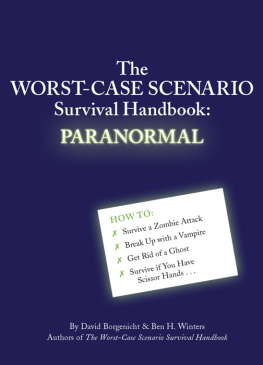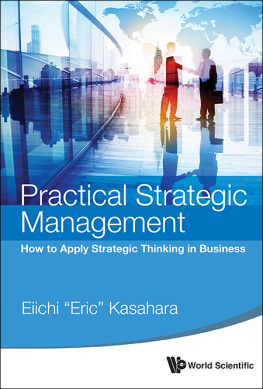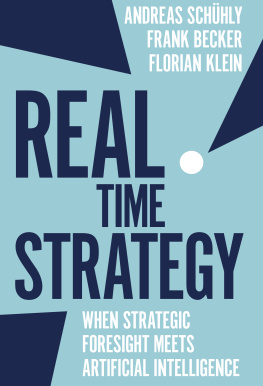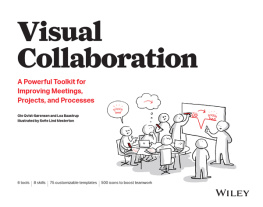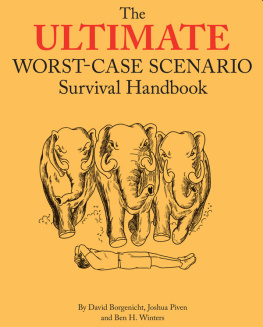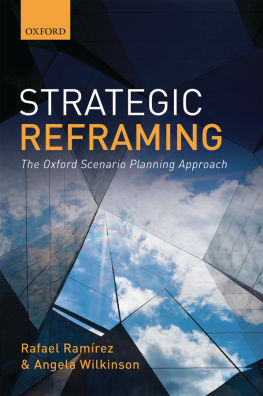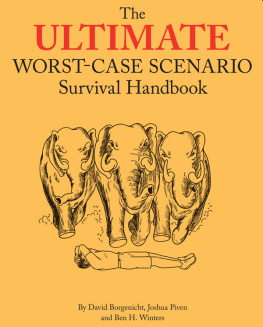Summary
As we saw in . Scenario thinking can help individuals think more broadly about the nature of the future and, in this book, we have presented a step-by-step approach to scenario thinking that will enable you to implement the intuitive logics scenario method without the aid of an external facilitator. Our approach has been decision-focused, in that the scenarios built by our method are immediately relevant to a focal issue facing an organization.
The conventional scenario method of intuitive logics can be augmented, and several of the chapters in this book have demonstrated the use and power of these augmentations:
- critiquing part-developed scenarios, such that inappropriate framings on the nature of unfolding futures are identified;
- role-playing of stakeholder reactions to the unfolding events within a particular scenario, such that part-developed scenarios achieve greater realism;
- understanding the impact of unfolding futures on the less-powerful but still impacted stakeholders, thus allowing you to reflect on the social desirability of an organizations actions and reactions to an unfolding future;
- providing a structured way of evaluating the performance of options against scenarios using a multi-attributed value approach;
- evaluating strategic options for strategic defense and strategic opportunism in the face of high-impact events of low predictability;
- constructing a range of extreme scenarios that are still causally-linked to the present by backwards logic; and
- diagnosing whether the organizational context is appropriate for a scenario intervention by analyzing the content of pre-intervention interview responses.
The contents of our book have been based, in part, on our academic research and, in part, on the reality-testing of our academic advances in the real-world via our consultancy practice. Thus, our recommended implementation of the intuitive logics scenario method, and our recommended enhancements and augmentations of the method have a grounding that is both strongly academic and practical.
The essence of the intuitive logics approach is causality, and this essential element is preserved throughout our range of enhancements of the basic method. Scenario method is specifically designed as an approach to problem investigation and analysis that is:
- inclusive in that it involves and engages with all relevant stakeholders who are represented in the scenario team;
- democratic in providing an open forum for the expression of all views and opinions; scenario thinking does not respect hierarchy the best insights can come from any member of the scenario team;
- non-selective in presenting a range of possible and plausible future conditions without making judgments on which is more or less likely to unfold in reality; and
- possibly threatening in that it will challenge both business-as-usual thinking and the individually held perspectives of scenario team members.
We hope that you and your organization(s) are now prepared to face up to the challenges of undertaking scenario analysis in order to gain insights into the future and improved decision-making in the present. We wish you success with your own endeavors in applying scenario thinking.
George Wright and George Cairns can be contacted at
Scenariothinkers@gmail.com
Appendix
SUGGESTED TIMETABLE FOR A 24-HOUR SCENARIO PROJECT
If you are undertaking a short, exploratory scenario project, you can consider bringing a group together for one day and undertaking the basic method, as set out in . However, our experience indicates that a one-day project has limitations, in that participants are required to work intensively throughout the day, and may become tired and less critical as the crucial stages of creative and challenging thinking are undertaken. Also, within an intense, single-day exercise, participants have little or no time to sit back and reflect upon their thinking.
We have found that a 24-hour scenario exercise is much more productive, with fresher minds at the crucial stages, and the chance for informal discussion and group reflection if an overnight stay is required. The following timetable outlines a typical set of timings that we have found appropriate for 24-hour exercises.
Day1: Afternoon (1.00 pm5.30pm)
Stage | Arrival and general introductions | 12:0013:00 |
Introduction to the Scenario Workshop | 13:0013:15 |
| Setting the Agenda | Defining the issue and process | 13:1513:45 |
| Determining the Driving Forces | Working individually, then as a group | 13:4514.30 |
| Clustering the Driving Forces | Group discussion to develop, test and name clusters | 14.3015.10 |
Tea/coffee | 15:1015:30 |
| Defining the Cluster Outcomes | Extreme outcomes for each of the clusters over the agreed timescale | 15:3016:30 |
| Impact/Uncertainty Matrix | Determining the scenario framing factors A and B | 16:3017.00 |
Summary Day 1 | 17.0017.15 |
Reception, informal discussion followed by dinner | 17:30 onwards |
Day2: Morning (9.00 am1.00pm)
Stage | Welcome Back, overview of Day 1 plus overnight insights | 09:0009:15 |
| Framing the Scenarios | Defining extreme outcomes for the key scenario factors, A and B | 09:159.30 |
| Scoping the Scenarios | Building the set of descriptors for 4 scenarios | 09.3010.00 |
7b | Stakeholder Analysis | Determining the stakeholders and their place in each scenario | 10.0010.45 |
Coffee/tea | 10:4511.05 |
| Developing the Scenarios | Working in sub-groups to develop scenario storylines | 11.0512:00 |
Group summary presentations and questions | 12:0012:45 |
Session wrap-up and follow-up planning | 12:4513:00 |
Lunch and departure | 13.00 |
In implementation, we have been very assertive in ensuring that the times are held to, in order to ensure completion. This example, you will note, includes the optional Stage 7b: Stakeholder Analysis (see ), in order to provide a broad stakeholder consideration to the scenario storylines and how their impact is assessed.
In facilitating a substantial number of such 24-hour scenario projects, we have found on many occasions that participants come to Day 2 having woken at 6.00 am, 5.00 am, or even earlier with some Aha! response to issues that have emerged in Day 1. These insights then contribute to the analysis and scenario development in Day 2, adding depth, clarity, or increased plausibility and credibility to the scenario storylines.
References
Alfaro, L. and Kim, R. (2009/2010) U.S. Subprime Mortgage Crisis: Policy Reactions (B). Boston, MA: Harvard Business School Publishing.
Beech, N. and Cairns, G. (2001) Coping with Change: The contribution of postdichotomous ontologies, Human Relations, 54(10): 130324.
Berger, P.L. and Luckmann, T. (1966)



